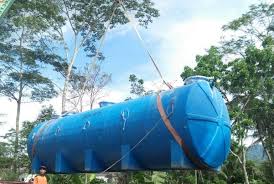
Tanks have revolutionized warfare since their introduction during World War I. These jual tangki frp armored vehicles, designed to break through enemy lines and provide heavy firepower, have evolved significantly over the past century. Today, they are a staple of modern military forces, continuing to play a crucial role in ground combat.
Origins and Development
The concept of the tank emerged from the need for a vehicle capable of crossing difficult terrain and withstanding small arms fire while delivering firepower. The first tanks were deployed by the British Army in 1916 during the Battle of the Somme. These early tanks, such as the Mark I, were slow and mechanically unreliable but marked the beginning of a new era in warfare.
Throughout World War I and II, tanks underwent rapid development. During WWII, tanks like the German Tiger I, the Soviet T-34, and the American Sherman became iconic. Each model represented advancements in armor, firepower, and mobility. The evolution continued with the introduction of main battle tanks (MBTs) in the post-war period, which combined the best attributes of previous designs into a single platform.
Modern Tanks
Today’s tanks are sophisticated machines, equipped with advanced technology for fire control, communication, and protection. Modern tanks like the American M1 Abrams, the Russian T-90, and the German Leopard 2 feature powerful engines, composite armor, and advanced targeting systems. These improvements ensure tanks remain relevant in the face of new threats, including anti-tank missiles and drones.
Tanks in Modern Warfare
In contemporary conflicts, tanks continue to play a vital role in combined arms operations. They provide crucial support in both offensive and defensive roles, helping to breach enemy defenses and secure territories. Their presence on the battlefield can influence tactics and strategy, offering a psychological edge and a physical presence that can turn the tide of engagement.
However, the role of tanks is evolving. The rise of asymmetric warfare and urban combat has led to a reevaluation of tank tactics. Modern tanks are now often used in conjunction with infantry, reconnaissance units, and air support to maximize their effectiveness and minimize vulnerabilities.
Future of Tanks
Looking forward, the future of tanks involves integrating even more advanced technologies. Innovations in artificial intelligence, robotics, and autonomous systems are expected to play a significant role. Additionally, advancements in materials science could lead to even more durable and lighter armor, while improvements in propulsion technology might enhance mobility.
In summary, tanks have undergone remarkable evolution since their inception. From their rudimentary beginnings to their current high-tech incarnations, tanks have significantly impacted the course of military history. As technology continues to advance, the role of tanks will likely adapt, ensuring their place on the battlefield for years to come.
